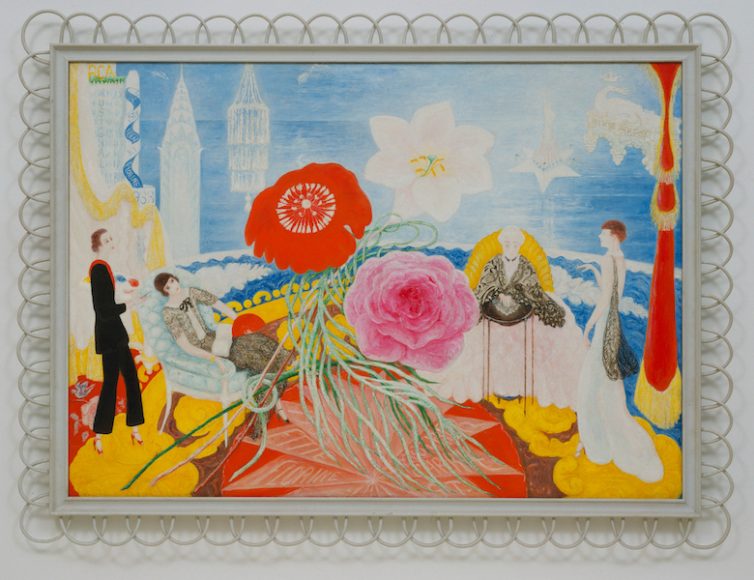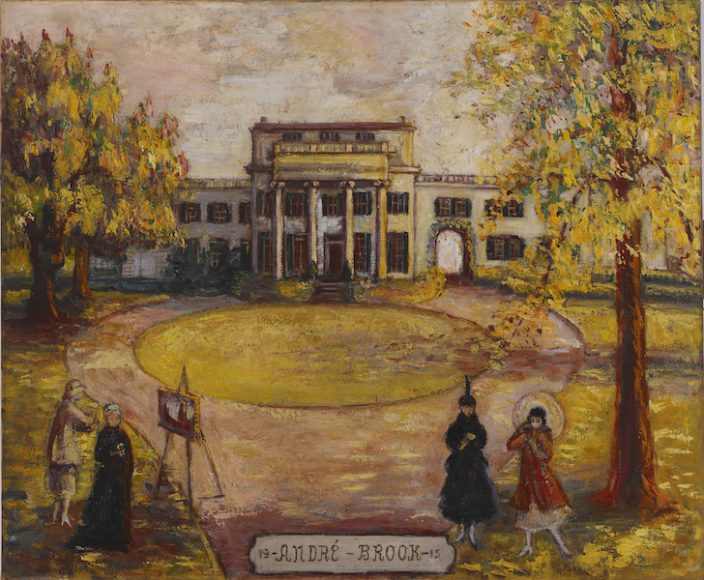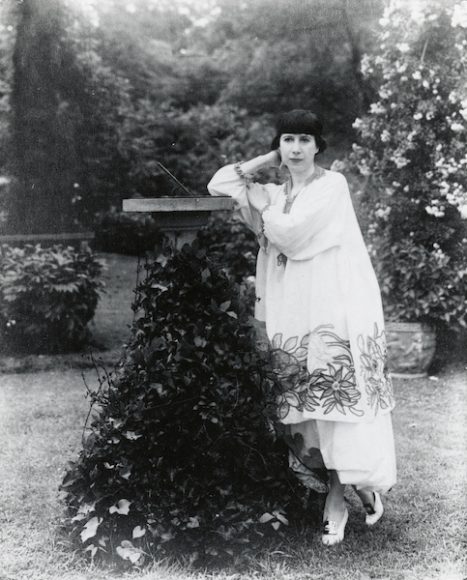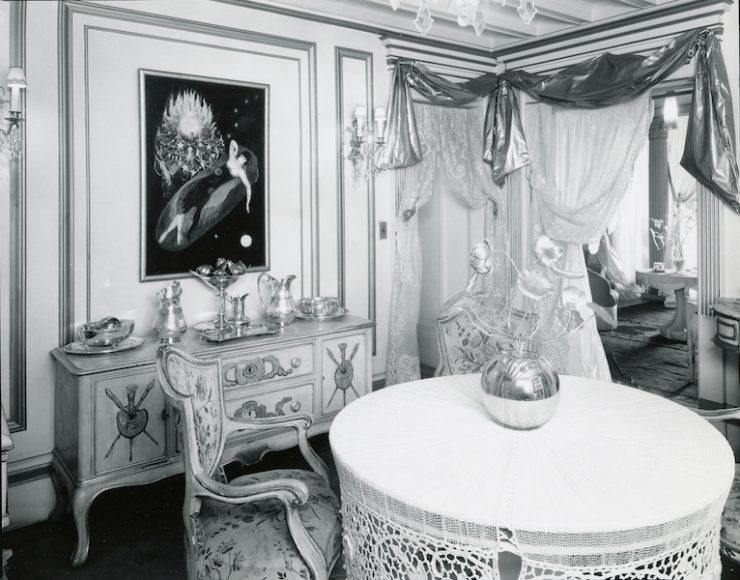WAG had last visited the Jewish Museum earlier this year to catch the memorable design show devoted to Pierre Chareau, which we thoroughly enjoyed.
And so it was with that same sense of adventure that we headed to the Manhattan institution again for a recent afternoon devoted to exploring “Florine Stettheimer: Painting Poetry.”
With our latest fashion-themed September issue fresh in our minds, it seemed like the perfect time to catch the first major U.S. exhibition in more than 20 years devoted to the work of the modernist painter, designer and poet.
On display are more than 50 paintings and drawings complemented by costume and theater designs, photographs and ephemera, billed as “offering a timely reconsideration of this influential American artist with a sharp satirical wit, placing her centrally in the modern dialogue of high and mass culture.”
Here’s how Stephen Brown, Neubauer Family Foundation associate curator at the museum, advanced the show:
“Stettheimer has sometimes been typecast as a lightweight feminine artist with a whimsical bent. This view is belied by her powerful thinking of portraiture and her astute adaptation of European vanguard ideas, most notably Symbolism, to uniquely American imagery.”
Here’s a brief overview, as provided by the museum:
“Born to a wealthy Jewish family in Rochester, New York, Stettheimer studied at the Art Students League in New York City and then in Europe, where she encountered two profound influences – the Symbolist painters and poets and the Ballets Russes. Stettheimer’s return to New York in 1914, as World War I began, was a turning point for the artist, who was then in her mid-40s. She made her New York art debut with a 1916 solo show at the prestigious Knoedler Gallery, but it proved disappointing, attracting lukewarm press and no sales. She and her sisters Carrie and Ettie, and their mother, Rosetta, then developed a stratagem for unveiling her new works, characteristic of the period – parties. Their elite salon attracted many of the leading lights of the artistic vanguard, including her close friend Marcel Duchamp, as well as Alfred Stieglitz, Carl Van Vechten, Georgia O’Keeffe, Elie Nadelman, Gaston Lachaise and many others. Flamboyant and epicurean, Stettheimer was an astute commentator on her social milieu.
“The exhibition presents Stettheimer’s work in the context of the social and intellectual environment of early 20th-century New York, exploring the artist’s fascinating position as an American Modernist whose work exuberantly reflects on the mass culture of her times. Over four decades of cultural development, from the Gilded Age to the Jazz Age, the exhibition examines Stettheimer’s unique artistic style, her position as a link between groups within the New York art world and her continued influence on artistic practice today.”
We were fascinated by the work, which represented many facets of Stettheimer (1871-1944), starting with the charming first work you see, “Family Portrait II, 1933,” to a few works with unexpected ties to WAG country.
Two 1915 paintings are devoted to André Brook, a Tarrytown estate where the Stettheimer family spent several summers, while another, “Picnic at Bedford Hills” (1918 ), features a group including Duchamp dining on “lobster, cake and tea on a flowered cloth.”
All added up for another memorable museum visit.
“Florine Stettheimer: Painting Poetry,” which continues through Sept. 24, is organized by the Jewish Museum and the Art Gallery of Ontario, Toronto (where it will run from Oct. 21 to Jan. 28, 2018). The Jewish Museum is at 1109 Fifth Ave. (at 92nd Street).
For more, visit thejewishmuseum.org.
– Mary Shustack




